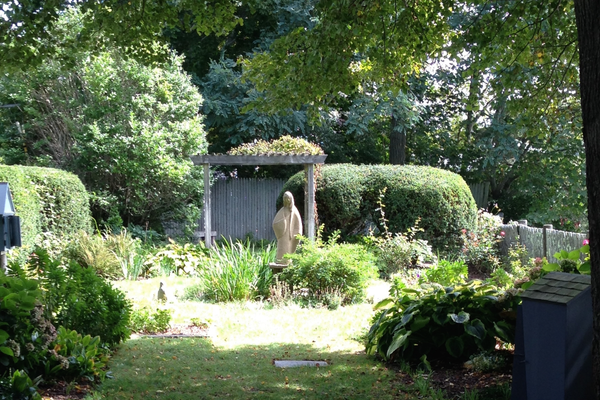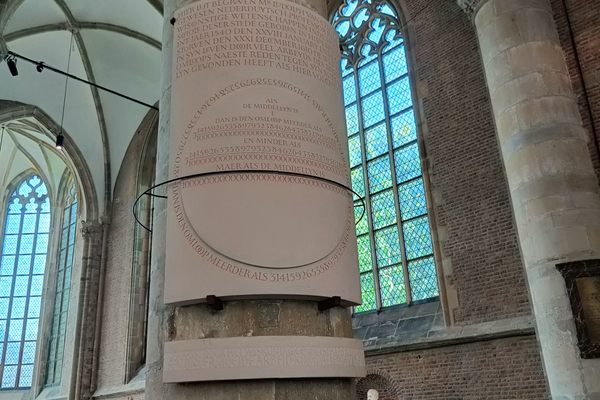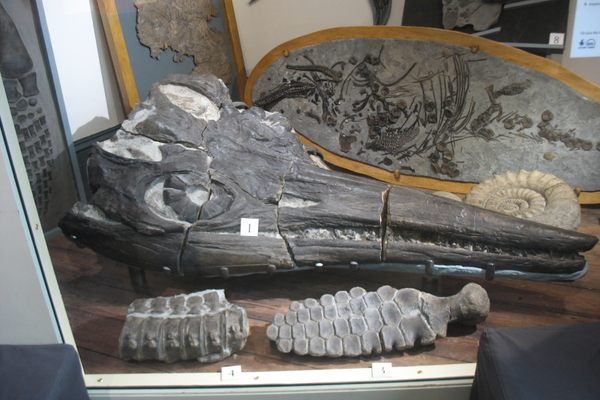AO Edited
Rachel Carson Memorial
A monument to the groundbreaking environmentalist sits near the place where she first experienced the sea.
Water is life and, in many ways, life is water. It is essential for (most) life and, in the ways it rushes, settles, whirls, and freezes, it is symbolic of life. Though we can control water through nozzles and pipes, the forms that have long intrigued humanity is found not in our sinks but in our seas. What lies beyond the horizon while you’re lounging at the beach? Scientists and environmentalists who have worked to better understand marine life and the world’s oceans have been immortalized for their accomplishments: Jacques-Yves Costeau, Hans Haas, Eugenie Clark, and the legendary Rachel Carson.
Carson was born hundreds of miles from the nearest ocean in Springdale, Pennsylvania, in 1907. As a child, she was an avid reader and fell in love with stories of the natural world. That reading inspired her to write several short stories, and she published her first story at just 10 years old.
Carson’s lifelong devotion to the ocean began in the late 1920s, when she began attending the Pennsylvania College for Women (later renamed Chatham University). She originally studied English, but later changed her major to biology. After graduating in 1929, she spent a summer at the Marine Biology Laboratories at Woods Hole in Falmouth, Massachusetts. To quote Carson, “I had my first prolonged contact with the sea at Woods Hole…That wonderful place of whirlpools and eddies and swiftly racing water.”
That time at Woods Hole was hugely impactful for Carson. She went on to become the editor-in-chief for all publications from the U.S. Fish and Wildlife Service and led a remarkable 15-year career in the federal government studying and protecting nature. She would also publish a handful of books that cemented her as one of the country’s leading experts on the ocean, such as Under the Sea-Wind (1941) and The Edge of the Sea (1955). While a government job and some award-winning books under her belt could have been the perfect excuse for Carson to kick her feet up and relax, she instead continued working to protect the natural world. It was this work that would change the world.
After World War II, farmers across the United States would turn to new innovations in synthetic chemical pesticides to protect their crops. Dichlorodiphenyltrichloroethane (DDT) was the pesticide of choice. While effective from an agricultural standpoint, some were wary of this new chemical concoction’s effect on the environment; none more so than Carson. She recognized that the long-term use of DDT posed an incredible threat, as DDT was becoming linked to decreasing animal populations as well as risks to human health. The idea was supported by a lot of data, but Carson faced fierce opposition from the United States Department of Agriculture. Several authors she reached out to for contributions shied away from the controversial project. Yet Carson was undeterred. In 1962, she published the book Silent Spring, which detailed the threats of DDT usage. it Became a best-seller, with fans including President John F. Kennedy and Supreme Court Justice William Douglas. Most importantly, it ignited a generation of Americans to become aware of their impact on the environment. Many credit Silent Spring as kickstarting the global environmentalism movement.
Sadly, only two years after Silent Spring was published, Carson died at the tragically young age of 56 of a heart attack after a long battle with breast cancer. She lives on through the efforts of millions she influenced to care about the Earth we all share with one another. So too does she live on in her beloved Woods Hole, where a memorial sculpture by artist David Lewis was unveiled in 2013. The statue shows a smiling Carson staring off towards the ocean, and is situated right next to the Woods Hole Port, where some of the most advanced oceanographic technology in the world is stationed. A fitting tribute to a woman who made the ocean just a little bit more familiar to us all.























Follow us on Twitter to get the latest on the world's hidden wonders.
Like us on Facebook to get the latest on the world's hidden wonders.
Follow us on Twitter Like us on Facebook